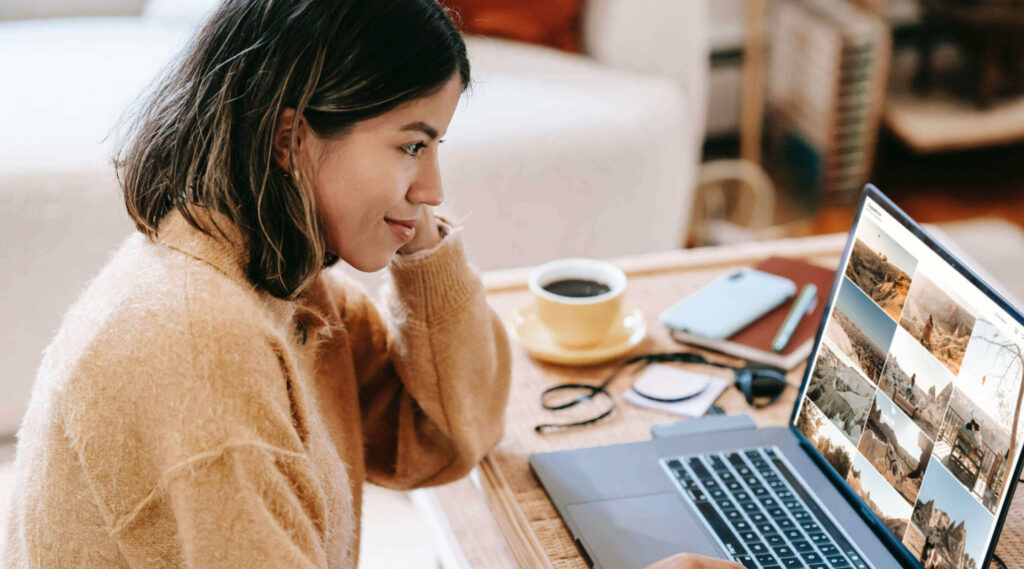BLOG

5 Things to consider before going full-time into photography
Running your own photography business can feel like a dream come true. You get to do what you love, on your own terms and at your own pace. At the same time, making a living out of your craft, comes with a fair share of challenges and surprises. From taxes and accounting, to establishing your prices, marketing your services, setting boundaries. If you’ve been thinking of moving into full-time photography, and aren’t sure how to do it, this article will help.
We reached out to several photographers from different niches and at different stages of their career, to ask for advice and recommendations. Here are the 5 things they shared with us that you should definitely consider before going full-time into photography. Even though every journey is unique, we can all learn from each other and grow together.

1. You don’t have to leave your job right away
Having a stable job and source of income while photographing on the side, gives you room to experiment without feeling financial anxiety. You can slowly grow your portfolio, learn new techniques, try various photography styles and create meaningful connections. Once you’re ready to go full-time, you’ll already have a well-established portfolio and business skills to rely on.
”Being a full-time photographer was always the dream, but I honestly always thought it was out of reach. I've always been a planner, always looking five years into the future, so the thought of leaving a full-time job with benefits and security was not easy. I first decided that I was going to go full-time the first weekend of March in 2020. I made all of my doctors' appointments because I knew I'd be losing insurance. Two weeks later, we all know what happened. I watched a full year of my wedding income get postponed to 2021 and just thought how grateful I was to have my 9-5 still.” — Jillian Blanc, Wedding Photographer
”I had four jobs at once. I was a farmer, a photo framer, worked at a university as a photographer, and also had freelance on the side. Year by year, I built my portfolio and my following on social media. Subsequently, I was able to shed one job a year until all I was doing was framing and freelancing. I finally had enough clientele to drop the last job and jump in head first as a full-time photographer.” — Hunter Hart, Photojournalistic Photographer
”When my job requested my return to the office, I proposed freelancing instead, but unfortunately, my offer was declined. Nevertheless, shortly after, I successfully completed my first product photography assignment, and that milestone inspired me to take a leap of faith and embrace photography as a full-time pursuit. If there's one thing I would change, it would be to educate myself on various methods of generating passive income before making the decision to leave my job. Expanding my knowledge in that area would have provided me with additional financial security and options, making the transition to full-time photography even smoother.” — Alexus Roberts, Photographer & Art Director

2. Learn from other photographers and online resources
Watch tutorials on YouTube, read educational articles, join online communities to ask for help and support. There are so many ways you can hone your skills. Attend a workshop, a photography fair or any other event where you can meet experienced professionals and learn from them. Doing all this work helps you build a strong foundation of connections so you can feel less lonely in your journey, as you go full-time and start earning a living through your camera.
”If I was getting started now in photography, I would probably do the same thing that I did when I got started — take advantage of every free resource on YouTube, talk to as many people as I can that know more than me. I would go out and practice more. I would just get it wrong faster so that I could get it right sooner.” — Lemar Griffin, Digital Creator
”If I could start over, I would have had a mentor of some sort to help me understand all of the hardships that come with being a full-time photographer. I had to learn the hard way that it is not easy at all to get started nor is keeping that trajectory of constant growth. Workshops are also very helpful, I wish I would have taken more of these because there are so many good ones out there to help get through all of the issues I have mentioned.” — Hunter Hart, Photojournalistic Photographer
”The best advice I can give is invest in yourself. Invest in ongoing education. Go to workshops not only to create with no pressure, but to network. I have so many amazing creatives in my corner and we are always referring to each other on days we're already booked. It's made such a difference.” — Jillian Blanc, Wedding Photographer
”Prior to embarking on full-time entrepreneurship, I conducted a thorough financial assessment to ensure a stable foundation. Prudently, I set aside enough funds to cover my expenses for a period of 3-6 months, providing a safety net in case of any unforeseen challenges. Carefully calculating the minimum income required to sustain my livelihood and factoring in the duration I could manage without immediate earnings, I prepared myself for the transition. I also maintained a disciplined approach to saving, which further fortified my confidence in embracing my business as my primary pursuit.” — Alexus Roberts, Photographer & Art Director

3. Get to know the business side and how your niche works
Each industry has its particularities. Invest time to understand how a photography business works, depending on your niche. For example, a wedding photographer relies on seasons, while a commercial or portrait photographer can have projects all year round. Depending on who your client is, you will have to adapt to different requirements and expectations that impact your business workflow.
”Some of the hardest things as a full-time photographer is understanding how to pay yourself, do your own taxes and understand seasons. Seasons of photography for me are spring and fall mostly, so budgeting for the slow times was a struggle and something everyone should know about before entering this path.” — Hunter Hart, Photojournalistic Photographer
”The main thing with this career is clients. How do you get yourself out there? What kind of experience are you giving your clients? Are they coming back? Referring you to their friends? Once you get over that initial hurdle of working for basically nothing to build a portfolio, it's focusing in on what is important to you.” — Jillian Blanc, Wedding Photographer
”Throughout my journey, I encountered various challenges, including dealing with clients seeking low-cost services, facing harsh criticism, experiencing payment failures, and dealing with clients who suddenly vanished. Additionally, managing scope creep was a common hurdle. However, I tackled these obstacles by taking them one step at a time and learning from each experience. I must admit, I didn't always have all the answers, but I wasn't afraid to seek help when needed.” — Alexus Roberts, Photographer & Art Director

4. Great client experience will take you far
With so many professionals entering the market each year, the experience you offer to clients can set you apart and help you maintain a constant flow of inquiries. As you develop your skillset and take on more sessions, pay attention to the touch-points you have with your clients, from the moment they book you, till the point they receive their gallery. A professional, pleasant and effortless process can go a long way, and shape how past and future clients perceive your photography brand.
”I want to be sure everything is set on my end so I can provide the best possible client experience from inquiry to gallery delivery. I want it to be easy for clients to sign contracts, book, make payments, and connect with me. I want everything to be clean and professional. I never want any part of the process to be confusing or difficult on the client's end.” — Jillian Blanc, Wedding Photographer
”Maintaining a well-structured process from the initial client inquiry to the final photo delivery has been pivotal in my approach. Effective communication plays a significant role throughout the entire journey. I place great emphasis on ensuring seamless interactions with clients, guiding them from lead to agreement, invoice payment, and beyond. Utilizing Pixieset for photo delivery has proven to be a valuable addition to the process.” — Alexus Roberts, Photographer & Art Director
”I believe consistency is key for photography. You want your next client to have the same experience as your last. This would include the look of your images, the way you interacted with them, how you present images to your client and overall just to make it fun for the client.” — Hunter Hart, Photojournalistic Photographer
5. Reflect on your work and goals to always show up authentically
Things are changing quickly within the photography industry, impacting everyone on different levels. Knowing what you stand for, what type of work you want to pursue, and how you want to build your career in the long haul — is essential in keeping your focus and motivation when things don't fall into place.

”No matter how good you are at photography, there's going to be down days, there's going to be bad days, there's going to be days that you don't feel like picking up your camera. I know that sounds crazy because you love photography, you love taking pictures with your camera. But once you make a living taking pictures, the way that you survive, the way you put food on the table, the way you pay your bills, it changes photography in a sense. I'm not saying you're going to lose the love or lose the passion, but once you make something the way that you have to survive, it changes the way that you look at that.” — Lemar Griffin, Digital Creator
”I took on clients that were maybe not the best fit because I thought I had to. I said yes to discounted pricing when asked because I thought I was just turning away money. It completely burned me out. When the world was shut down, I was able to reflect and think about where I wanted to go with photography. I knew I wanted to gear myself toward intimate weddings, elopements, and travel.” — Jillian Blanc, Wedding Photographer
Grow your photography business with Pixieset
Going full-time into photography can feel scary and daunting at times. We hope reading stories and advice from other photographers helps you plan your transition with more confidence. We believe with the right mindset and tools, you can set up yourself for success.
Pixieset is an all-in-one platform for photographers that helps you power up your entire workflow. With Pixieset, you can deliver photos and videos to clients, sell prints and digital downloads, build an impactful website, manage contracts, payments and bookings — all in one place.
Get started with a free account and unlock more features as your photography business grows.


 Studio Manager
Studio Manager 
 Website
Website 
 Store
Store